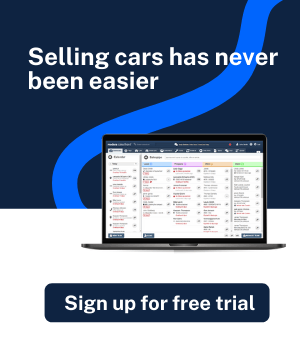
Simply getting leads for your auto dealership isn’t sufficient, you have to ensure they are being managed properly, or several lucrative ones can fall through the cracks. That is why it is necessary to come up with a solid lead management strategy that can produce results in the form of increased sales.
What is automotive lead management?
Automotive lead management is the process of tracking and nurturing leads for car dealerships. Individual salespeople track their own leads based on who they have interacted with, either in person or online. These days, many dealerships are using automotive lead management software tools. Thay help to automatically segregate leads and assign them to different team members, based on numerous parameters. Car sales are a high-stakes domain, so it is essential to have an efficient automotive lead management strategy that your entire team knows how to use to their benefit.
A look at top lead management strategies
Collect information upon first contact
Waiting for customers to get in touch later to ask for more information is a mistake. Get their information when they first come into your facility, before they even move on to a test drive. Name, email, phone number, and qualifying information like plans for financing and their preferences regarding the vehicle model – just these details can give you a lot to work with. Ask qualifying questions right from the get go so you can start compiling the data required to best serve the customer as soon as possible.

Develop a referral system
This might sound a bit obvious, but one of the best ways to generate and manage leads more effectively is to get referrals from past customers. These are clients who have come to the dealership and are satisfied with products and services. Give them a discount for any car parts they might require, on extended warranties, etc. Make sure that your dealership has a referral system in place and that your sales team is reminding customers about it regularly. Everyone loves a reward, and it is a win-win for all parties involved.
Stay updated about ongoing preferences
In an ideal scenario, a customer walks in, picks out a car they like, and walks out with it on the same day. But this isn’t the reality for most clients and it could take weeks to complete a purchase. That’s why it is imperative to stay in touch constantly, to understand a lead’s interest in new deals or prices, various makes and models coming onto the market, and new financing options. Follow up on a regular basis – make sure to keep a record of whether they prefer to be contacted via phone or email. It keeps the customer engaged, and ups the odds of the sale being closed successfully.

Implement a lead management system
Managing leads can get complex if you don’t adopt a systematic approach – the best way to ensure that is to use a CRM-focused tool like Modera that works exceptionally well with car dealership models. You can enter details about leads, keep track of preferences, find out if salespeople are following up, and so on. It brings together teams, processes, and channels under a single unit, which improves operational efficiency, and allows greater engagement with customers at every stage of the buying process.
It is not just about quantity all the time, but quality as well, because only well-qualified leads are likely to generate more profitable sales. Leads that are poor in quality mean wasted time and effort. Follow the lead management strategies mentioned above, and try to integrate them into your personnel training module. The number of leads is always vital, but ensuring that they are of high quality is important for boosting dealership conversion rates, increasing return-on-investment, and ensuring sustainable success.


